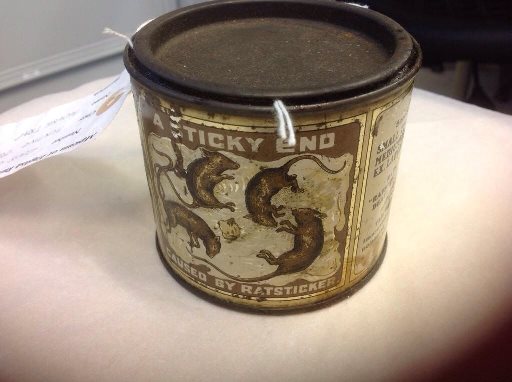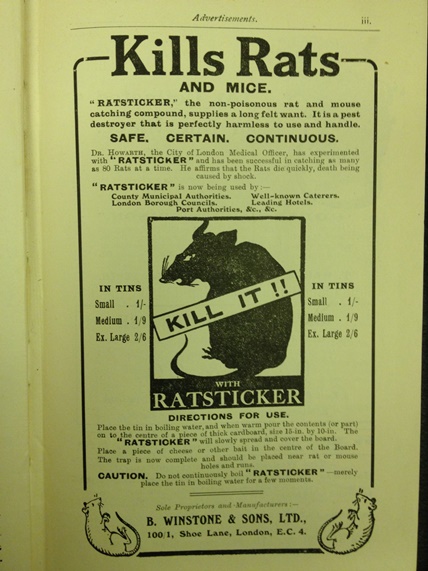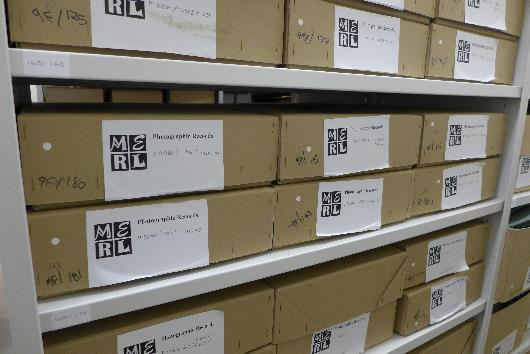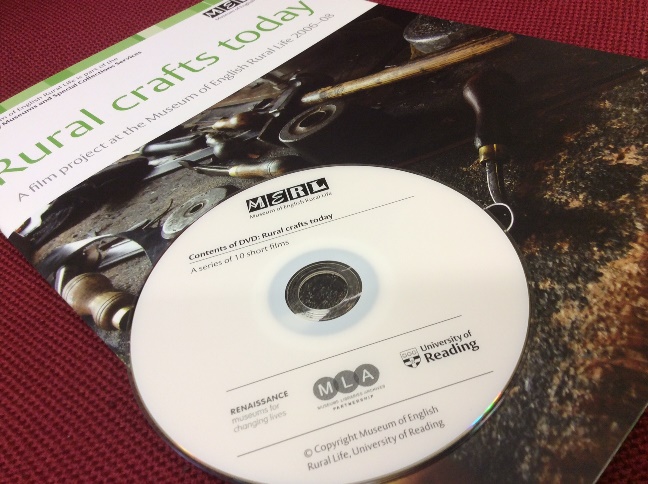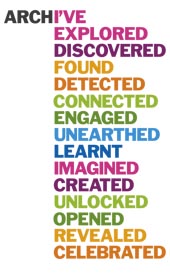For our first Reading Readers post, Francesca shows us the wealth of material she has found in the CPRE (Council for the Preservation of Rural England) archive whilst researching for her PhD.
I am researching for a collections-based PhD entitled Preservationism and Development in Rural England, 1926-2016: Policy and Practice, focusing on the collection of the Campaign to Protect Rural England (CPRE), held at the Museum of English Rural Life (MERL).

Francesca taking a look through some CPRE exhibition panels (SR CPRE F)
Within my PhD I am researching the relationship between the CPRE, policy-making, rural development, and the wider preservationist movement. Interestingly, there are opposing arguments in this area; preservationism is either seen to have had a stranglehold on rural development, or conversely, that it has been powerless to stand in the way of ever increasing development. My research aims to explore these arguments, to place the work of the CPRE within the movement, to explore its influence on rural policy, and its impact on rural development. So who were the CPRE?
Originally called the Council for the Preservation of Rural England, the CPRE was formed in 1926 by a group of prominent figures; among them the architects and planners Patrick Abercrombie and Guy Dawber. It was initially an umbrella group that brought together a number of organisations; notably The National Trust, the Royal Institute of British Architects, the Commons, Footpaths and Open Spaces Society, and the Women’s Institute, among many others. With the purpose of ‘[securing] the protection of rural scenery and of the amenities of country towns and villages from disfigurement or injury’ (SR CPRE A/1), they aimed to both preserve the English countryside through extensive campaigning, and to educate the public about how to protect the countryside too. Through exhibitions & talks, leaflets & pamphlets, surveys & reports; they campaigned, lobbied, and informed.
Fantastic examples of such exhibitions can be seen in these 1930’s exhibition panels (SR CPRE F/1, SR CPRE F/11, SR CPRE F/32) which the CPRE used to juxtapose good and bad examples of design, aesthetics, and country life.
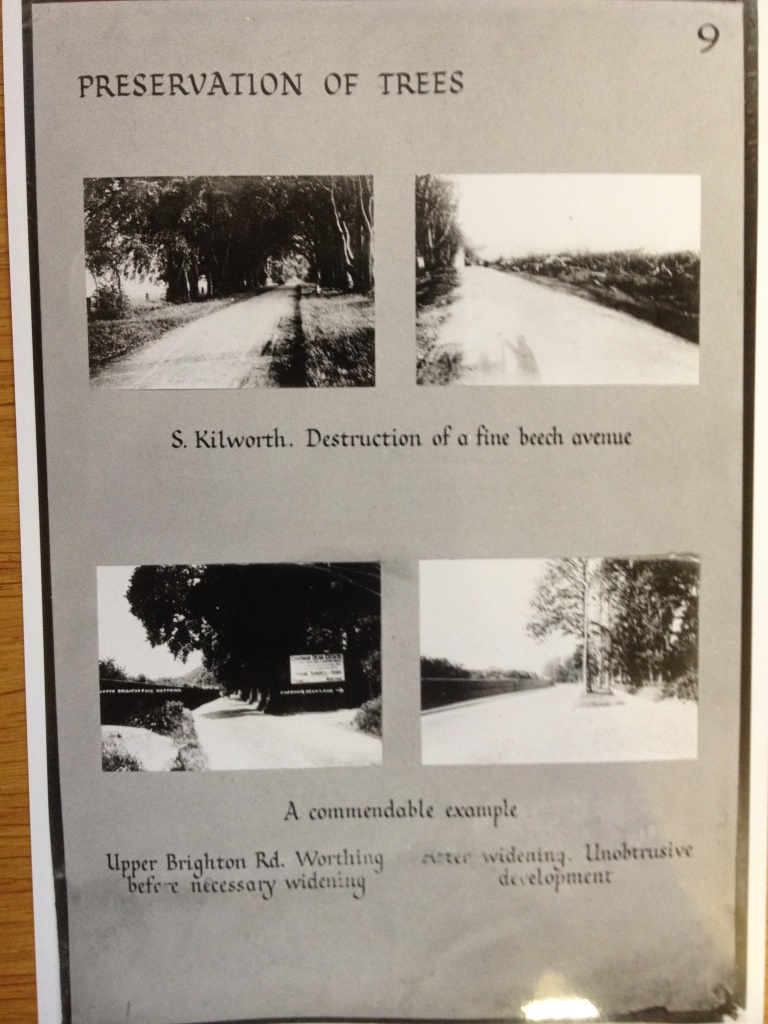
CPRE excibition panels (SR CPRE F/11)

CPRE excibition panels (SR CPRE F/32)

CPRE excibition panels (SR CPRE F/1)
Indeed, this tradition of exhibiting and comparing visual examples of the destruction of the countryside with picturesque visions of the rural landscape continues throughout the CPRE’s work. In 1987 we can see a fascinating example of such an exhibition entitled ‘Tomorrow’ (SR CPRE C/1/48/29); where the CPRE asked the viewer to consider whether these beautiful rural scenes will be here tomorrow.

The catalogue from the charity sale of photographs from the ‘Tomorrow’ exhibition, including photographs taken by prominent British photographers like Linda McCartney (SR CPRE C/1/48/29).
Within my PhD I am currently exploring the concepts around the relationships with, and experience of, the countryside. The CPRE is often positioned as an organisation that is focused on the visual; on aesthetic ideas of the countryside. However I am keen to explore the extent to which they paid attention to a more experiential (for example an emotional or sensory experience) relationship with the landscape.
The most interesting/surprising thing I have discovered was… a leaflet entitled ‘Measuring the Unmeasurable: Twenty indicators for the countryside” from 1995 (SR CPRE D/1/72).

‘Measuring the unmeasurable’ (SR CPRE D/1/72)
Rural development is often spoken about in measurable terms; such as the number of houses built (or not!), the area of land that has given way to development, or economic factors. Yet this quirky leaflet poses the question of how to measure those ‘unmeasurable’ factors that come about through our experience of the countryside. This can include the ‘starriness’ of the night sky, the level of tranquility, a sense of wilderness, the ‘bendiness’ of country lanes, or the beauty of the landscape. It also raises questions about what should or shouldn’t be valued, experienced, seen, heard, felt, or even smelt in the countryside.
The CPRE archive provides a rich and fascinating array of materials to research, with items ranging from committee meeting minutes, correspondence, maps, publications, press cuttings, photographs, and even watercolours. It is through exploring these materials that we can shed light on the history and influence of the CPRE; the influence of this preservationist organisation in shaping both the rural landscape, and what we value about our experience of, and relationship with, the countryside.
You can find out more about the CPRE archive here: http://www.reading.ac.uk/merl/collections/Archives_A_to_Z/merl-SR_CPRE.aspx
Francesca Church is a PhD researcher at the University of Reading, based in both the Department of History, and the Department of Geography and Environmental Science.
Email: F.H.Church@pgr.reading.ac.uk Twitter: @FrankieHChurch
#readingreaders






